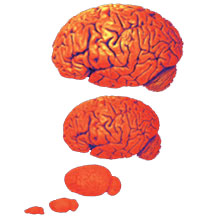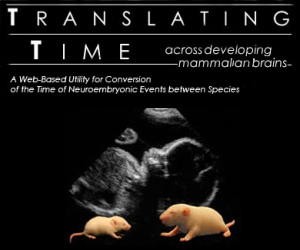
I take an evolutionary and developmental approach to the structure and function of the vertebrate nervous system, particularly the visual system and the cerebral cortex. What “units” of variation does the brain offer up to natural selection, and how do those units reflect the brain’s evolutionary path? How are the universal requirements of sensory system design and computation in nervous systems integrated with species-specific adaptations and niches?
Related sites
The Translating Time Website Because clinicians and researchers rely on neurodevelopmental data obtained from a variety of non-human species, it is essential to be able to determine equivalent maturational states across experimental animals, and humans. This web site is based on a database and model that finds equivalent post conception dates across mammalian species, and does the calculation for you. The model now integrates over 1,000 empirically-derived neural events to translate neurodevelopmental time across 18 mammalian species (placental and marsupial mammals) including hamsters, mice, rats, rabbits, spiny mice, guinea pigs, ferrets, opossums, cats, rhesus monkeys and humans.
BBS: Editors, Barbara Finlay and Paul Bloom BBS is the journal with the innovative format known as Open Peer Commentary. Significant and controversial pieces of work are published from researchers in any area of psychology, neuroscience, behavioral biology or cognitive science, together with 10-25 commentaries and the author’s response. BBS is a forum for the communication, criticism, stimulation, and particularly the unification of research in behavioral and brain sciences from molecular neurobiology to the philosophy of the mind. 2014 Impact Factor: 20.771



